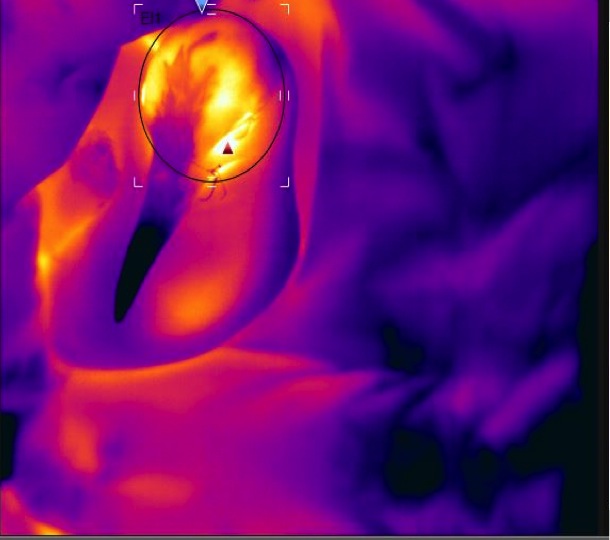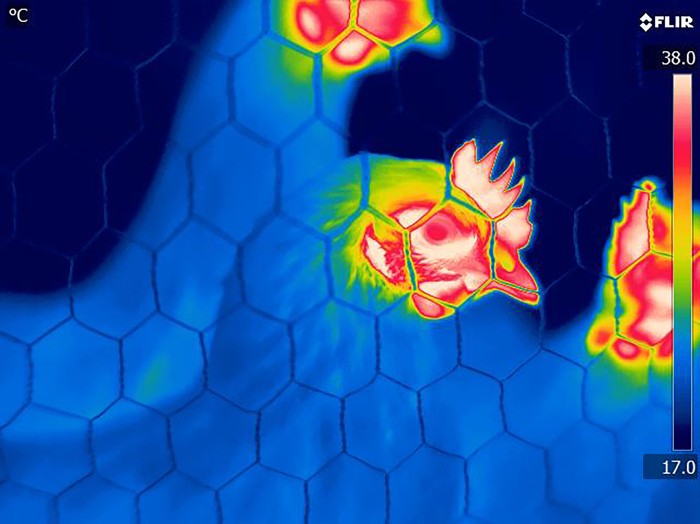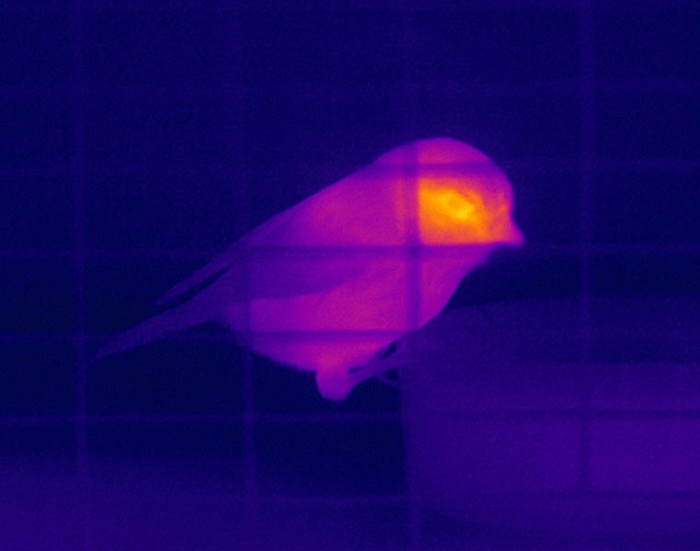How do we know if an animal is stressed? This unpleasant state is not reserved for humans, and if possible we would like to minimise the stress experienced by the animals around us. Traditionally, we have relied on measuring hormones in the blood to know if an animal is in a stressful state, but this invasive procedure has a flaw – if they weren’t stressed before they sure will be during and after. Here, Dr Ruedi Nager tells us about some exciting research happening in the institutes Thermal Ecology Group, which aims to develop a completely hands off method for measuring stress using thermal image analysis.

Stress is cool
We all know when we are stressed, and how much we want to avoid that feeling. Animals can also get stressed, and for those we care for or interact with, we would like to spare them from it as much as possible. Yet animals can’t simply tell us if they are under stress, so we need to use a reliable indicator. Currently, to determine if an animal is stressed we rely on measuring the quantity of stress hormones (mainly glucocorticoids) in the blood. However, this requires taking a blood sample, which is stressful for both animal and researcher. In addition, interpreting the results is not always straightforward: does a raised level of a hormone always indicate stress? Or does it indicate something else? For example, the stress hormone levels of a male mouse that just lost a fight against a rival are indistinguishable from those of one that just mated. Thus, we could really do with some alternative ways to measure stress.
Have you ever experienced a sinking feeling when you’re running late for an important train or just before speaking in public? Many of you will have experienced changes in blood flow in these stressful situations — the blood pounds through your veins and arteries, your head throbs and you are very aware of the beating of your heart. The physical changes you experience are the manifestation of a fright-flight response that makes us want to get away from the stressor. To provide the necessary resources for this response, blood rushes to the central organs and raises the core temperature. Traditionally, to measure this raised temperature we would insert a thermometer into the animal, which is also stressful. However, the upside of warm blood rushing to core is that the surface of the animal cools, which we can measure without harming (or even touching) the animal by using a technique called thermal imaging.
Thermal imaging picks up the heat emitted from an animal’s body, and we can record that basically whenever it is possible to film an animal. It allows us to measure and quantify how the surface temperature in a stressed animal cools down. This is best done for areas of the body where we can pick up the body heat from the surface and not where it is covered by hair or feathers. Our work focuses on birds and we have found the area around our bird’s eye to be ideal for thermal image analysis, but this may be different in other taxonomic groups.
Validation of thermal imaging as a measure of stress in domestic chicken
In a first step, postdoctoral researcher Katherine Herborn evaluated the usefulness of thermal imaging as a measure of stress, using domestic chickens. Stress hormones have the useful property that their levels are proportional to the severity of the stressor — the more stressful an event, the higher the hormone level. This also seems to be the case with body temperature — the more severe an immediate, short-term stressor, the cooler the animal’s surface. Future work will explore whether thermal imaging can also characterise stress to which animals are exposed chronically over longer periods of time, which would be very valuable. We also hope to investigate whether we can use thermal imaging to differentiate between negative and positive experiences, something the stress hormones cannot do.

Application of thermal imaging in wild animals
To step up the challenges, PhD student Paul Jerem is using thermal imaging of wild blue tits to investigate whether he can reliably detect changes in body temperatures in response to well established stressors. The first set of experiments, on the response to an acute stressor (capture and handling), showed that we can indeed detect a cooling of the eye temperature of wild blue tits, and so identify whether they are stressed without having to touch them. We are now investigating how wild blue tits respond to repeated simulated attacks by a stuffed sparrow hawk rushing towards them along a washing line.

Our work over the last year or so has confirmed that we can detect a measurable response in surface temperature when animals are stressed. More importantly, we now know that the more stressed the animal is, the greater the surface temperature response that we can measure — so, surface temperature tells us more than whether an animal is stressed, it tells us how stressed it is. We can do this without having to capture, handle, or draw blood from animals; instead we capture our animals as wildlife photographers do — on camera.
An exciting prospect for this technology is our ability to quantify the stress response for the duration of a stressful event, where previously blood samples could only provide data for a particular time-point. This method may be very useful for behavioural and physiological ecologists, conservation biologists and animal welfare researchers alike, providing a noninvasive way to quantify stress.
Reblogged this on Diving into the deep and commented:
This fascinating article by naturallyspeakingpodcast explains thermal imaging in relation to stress measurement. Apparently, a cool surface is correlated with inner stress.
LikeLike